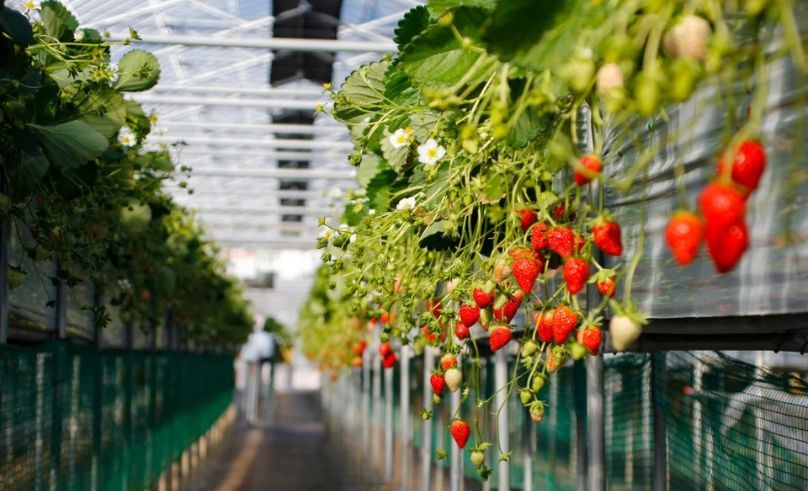Strawberries are among the most beloved fruits in the world, celebrated for their sweetness, vibrant red color, and versatility in fresh consumption, desserts, beverages, and processed food products. Beyond their culinary appeal, strawberries hold significant nutritional value, being rich in vitamin C, fiber, and antioxidants. Globally, strawberries are not just a fruit but also a valuable commodity in international trade, fueling billions of dollars in exports each year.
By 2025, the global strawberry market has expanded rapidly, driven by rising consumer demand in North America, Europe, the Middle East, and Asia. Improved cold-chain logistics, greenhouse technologies, and year-round cultivation methods have allowed exporting nations to supply fresh strawberries across the globe, often within days of harvest. This article examines the top strawberry exporting countries in 2025, highlighting their production strengths, export values, major trade partners, and strategies that enable them to dominate global strawberry markets.
The Global Strawberry Market in 2025

The strawberry export market is valued at over $4.5 billion annually in 2025. Key factors influencing growth include:
- Consumer demand for fresh produce: Strawberries are highly sought after in both developed and emerging economies.
- Processed food industry: Strawberries are used in jams, yogurts, ice creams, juices, and bakery products.
- Extended shelf life: Investments in refrigeration, packaging, and modified-atmosphere technologies allow strawberries to travel long distances while retaining freshness.
- Seasonal and geographic advantage: Southern Hemisphere exporters supply markets when Northern Hemisphere production is low.
1. Mexico – The World’s Leading Strawberry Exporter

Mexico is the largest strawberry exporter in the world in 2025, supplying more than 40% of globally traded strawberries. The country’s proximity to the U.S.—the largest strawberry importer—gives it a unique geographic advantage.
Key Features of Mexico’s Strawberry Exports:
- Export Value: Over $1.5 billion annually.
- Major Markets: United States, Canada, and, increasingly, Europe and Asia.
- Production Regions: Michoacán, Baja California, and Guanajuato dominate strawberry production.
- Export Form: Primarily fresh strawberries, with some frozen exports.
Growth Drivers:
- Favorable climate enabling year-round production.
- Advanced greenhouse and drip irrigation technologies.
- Low labor costs compared to competitors.
- Strong trade agreements under USMCA, ensuring smooth access to U.S. and Canadian markets.
Outlook: Mexico’s dominance will continue, with further expansion into Asia, where demand for high-quality strawberries is surging.
2. United States – A Leading Producer and Exporter

The United States is both one of the largest producers and exporters of strawberries. While much of its crop is consumed domestically, exports remain significant.
Key Features of U.S. Strawberry Exports:
- Export Value: Around $850 million annually.
- Major Markets: Canada, Mexico, Japan, and the Middle East.
- Production Regions: California accounts for nearly 90% of U.S. strawberry production, followed by Florida.
- Export Form: Fresh and frozen strawberries.
Growth Drivers:
- Advanced farming technologies, including hydroponics and greenhouse production.
- Strong domestic and international brand recognition.
- Proximity to Canada, the largest U.S. strawberry market.
Challenges: Labor shortages and rising production costs pose risks, though U.S. producers remain globally competitive.
Outlook: The U.S. will continue to rank among the top exporters, particularly with growing demand for frozen strawberries in Asia.
3. Spain – Europe’s Strawberry Giant

Spain is the largest strawberry exporter in Europe, supplying both the EU and non-EU markets. Huelva, in Andalusia, has become synonymous with large-scale strawberry cultivation.
Key Features of Spain’s Strawberry Exports:
- Export Value: Over $750 million annually.
- Major Markets: Germany, France, the UK, and other EU countries.
- Production Regions: Huelva province accounts for more than 90% of Spain’s strawberry production.
- Export Form: Fresh strawberries, with some frozen and processed.
Growth Drivers:
- Favorable climate and early-season production, giving Spain a competitive edge in the European market.
- Advanced farming methods, including polytunnels and precision irrigation.
- Strong integration with EU markets, benefiting from tariff-free trade.
Outlook: Spain will remain the dominant European strawberry exporter, though it faces competition from Morocco and Egypt for early-season exports.
4. Netherlands – The Greenhouse Leader
The Netherlands has established itself as a major exporter of high-quality strawberries, leveraging greenhouse and hydroponic systems to ensure year-round production.
Key Features of Dutch Strawberry Exports:
- Export Value: Around $600 million annually.
- Major Markets: Germany, Belgium, the UK, and Scandinavia.
- Production Regions: Limburg, North Brabant, and Gelderland are key growing areas.
- Export Form: Fresh strawberries.
Growth Drivers:
- Advanced greenhouse and vertical farming technologies.
- Proximity to major EU markets, reducing logistics costs.
- Branding of Dutch strawberries as premium-quality produce.
Outlook: The Netherlands will remain a major exporter, particularly in premium European markets that demand consistent supply and quality.
5. Egypt – A Rising Strawberry Exporter

Egypt has emerged as one of the fastest-growing strawberry exporters in recent years, competing with Spain in the early-season European market.
Key Features of Egypt’s Strawberry Exports:
- Export Value: Over $400 million annually.
- Major Markets: EU countries, Russia, Gulf states, and Asian markets.
- Production Regions: Nile Delta and surrounding regions.
- Export Form: Fresh, frozen, and processed strawberries.
Growth Drivers:
- Favorable climate allowing off-season production for Europe.
- Competitive labor and production costs.
- Expansion of frozen strawberry exports to Asia.
Outlook: Egypt will continue its rapid ascent, especially in frozen strawberry exports, challenging traditional leaders like Spain.
6. Morocco – North Africa’s Strawberry Export Power
Morocco is another strong competitor in the European strawberry market, particularly for early-season exports.
Key Features of Morocco’s Strawberry Exports:
- Export Value: Around $350 million annually.
- Major Markets: France, Spain, the UK, and the Middle East.
- Production Regions: Loukkos and Souss-Massa.
- Export Form: Fresh and frozen strawberries.
Growth Drivers:
- Geographic proximity to Europe.
- Competitive production costs.
- Government investment in export agriculture.
Outlook: Morocco’s role as an early supplier to Europe will grow, particularly as climate challenges affect production in Spain.
7. Turkey – Expanding in Regional Markets
Turkey has become a significant strawberry exporter, mainly serving nearby European and Middle Eastern countries.
Key Features of Turkey’s Strawberry Exports:
- Export Value: Around $250 million annually.
- Major Markets: Russia, Iraq, Eastern Europe, and Gulf states.
- Production Regions: Aydın, Mersin, and Bursa.
- Export Form: Fresh and frozen strawberries.
Growth Drivers:
- Expanding production in diverse climates.
- Rising demand in Eastern European and Middle Eastern markets.
- Competitive labor costs.
Outlook: Turkey will remain a regional strawberry powerhouse with potential to expand further into EU and Asian markets.
Comparative Overview
| Country | Export Value (Approx.) | Export Form | Major Markets |
|---|---|---|---|
| Mexico | $1.5 billion+ | Fresh, frozen | U.S., Canada, Asia |
| United States | $850 million+ | Fresh, frozen | Canada, Japan, Middle East |
| Spain | $750 million+ | Fresh, frozen | EU (Germany, France, UK) |
| Netherlands | $600 million+ | Fresh | Germany, Belgium, Scandinavia |
| Egypt | $400 million+ | Fresh, frozen | EU, Russia, Gulf |
| Morocco | $350 million+ | Fresh, frozen | EU, Middle East |
| Turkey | $250 million+ | Fresh, frozen | Russia, Iraq, Eastern Europe |
Challenges in Strawberry Exports
Despite their global appeal, strawberry exporters face several challenges in 2025:
- Perishability: Strawberries have a short shelf life, making transport logistics critical.
- Climate change: Droughts, heatwaves, and erratic rainfall affect yields.
- Labor shortages: Strawberry farming is labor-intensive, and rising costs threaten competitiveness.
- Market volatility: Price fluctuations and competition among major exporters.
- Sustainability pressures: Growing demand for eco-friendly farming and reduced pesticide use.
Conclusion
In 2025, the top strawberry exporting countries—Mexico, the United States, Spain, the Netherlands, Egypt, Morocco, and Turkey—collectively dominate the global trade. Mexico leads with its vast production and proximity to the U.S., while Spain remains Europe’s strawberry hub. The Netherlands excels in greenhouse production, and Egypt and Morocco are rising stars challenging established exporters.
The future of strawberry exports will depend on innovation in greenhouse farming, logistics, and sustainability practices. With consumer demand for strawberries continuing to climb worldwide, these leading exporters are well-positioned to meet global needs while navigating the challenges of climate change and market competition.




Leave A Comment